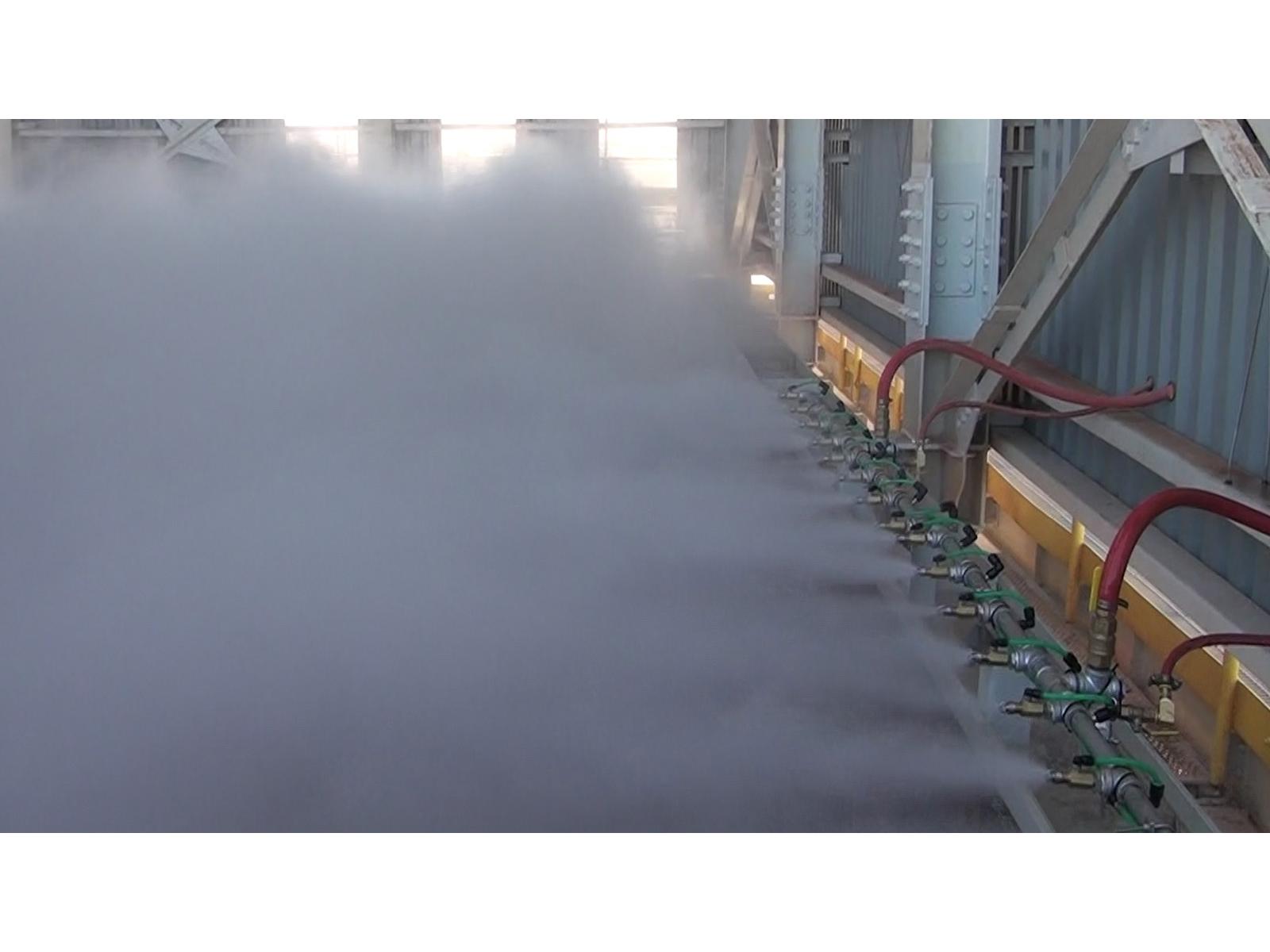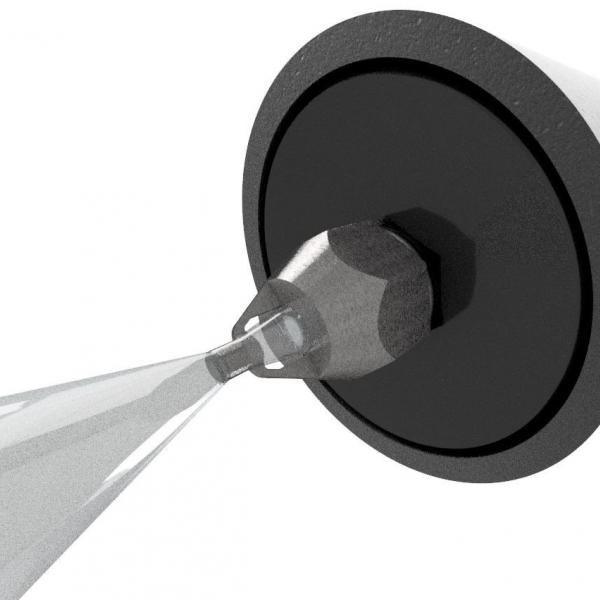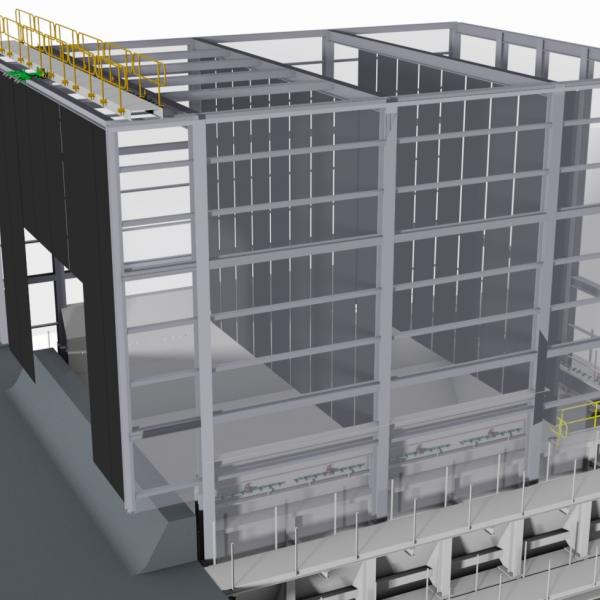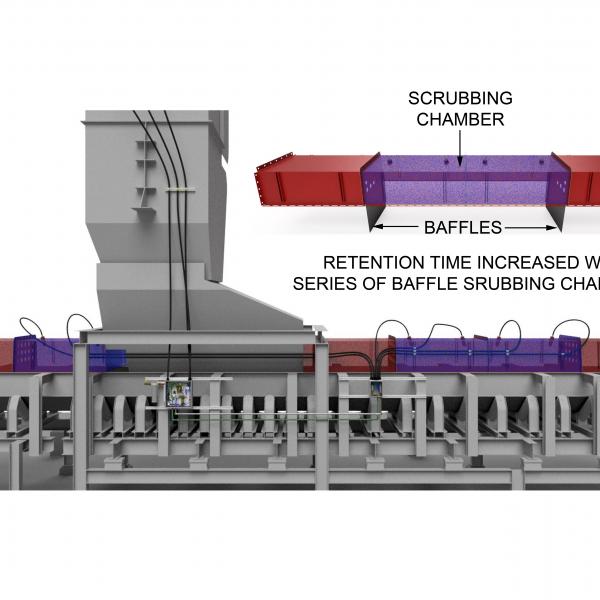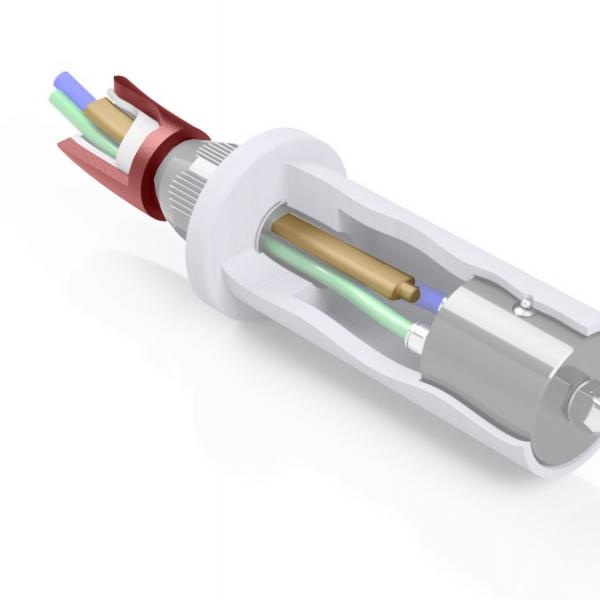ADS™ dry fog dust collection systems are highly efficient, patented, in situ, fine particulate scrubbers that use very little water, no chemicals, and do not increase the overall moisture content of the flowing material by more than a few hundredths of a percent.
Our Dry Fog systems use acoustic nozzles to create a cloud of extremely small droplets that are in the same size range as the airborne respirable dust. Key to the reliable delivery of fog into the system is the design of our FP series acoustic nozzles. These devices use compressed air to create high frequency sound waves that shatter water into the fog sized droplets needed while retaining adequate kinetic energy to project the fog where it’s needed and penetrate through opposing air flows. These water droplets agglomerate with the dust particles, make them heavier, and settle back to their source.
ADS™ technology is based on the principles of agglomeration of particles of like size and nucleation of sub-micron particles during condensation of water from a supersaturated atmosphere. These are the same principals that nature uses to cleanse the atmosphere.
The Raring Corporations' ADS™ dry fog dust control system works in much the same way as nature. A cloud is created using sonic air assist nozzles. The dust and fog are contained in a suitably designed environment to permit the collection processes to occur sufficiently. Electrostatic charge is induced naturally through the atomization process. And nucleation occurs due the dynamics of air movement within the containment.
Definitions:
Nucleation: is the process whereby water vapor condenses in a very small particle thus forming the water droplet.
Agglomeration: is the process whereby droplets and particles of similar size collide and form a larger, heavier droplet.
Electrostatic attraction: enhances agglomeration when the charges of two nearby particles or droplets are opposite.In nature,water droplets in clouds are often neutral but in storm conditions, the upward flow of warm, humid air rips electrons off of the cloud droplets causing a static differential between areas within the clouds causing lightening strikes when the differential reaches a critical level.
Elements of Dust System Design
There are four key elements in the design of a good dust control system and they are not unique to fog systems:

